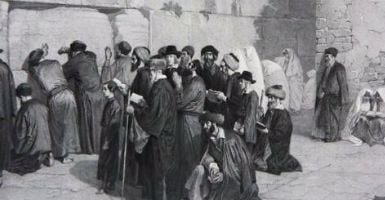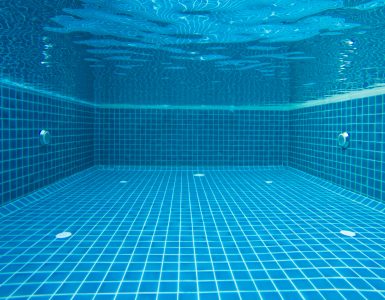In the male reproductive system, the prostate gland is located just below the bladder and anterior to the rectum. The seminal vesicles are located posteriorly to the prostate and produce seminal fluids that travel via the ejaculatory ducts to merge with the urethra as it passes through the prostate, carrying urine and semen out of the body. The prostate gland releases secretions that are expelled into the urethra during ejaculation.
Enlargement of the prostate occurs frequently with aging and can be due to either benign nodular enlargement of the central glandular portion of the prostate, known as benign prostate hyperplasia (BPH), or to malignant carcinoma. BPH can lead to constriction of the urethra and partial or complete obstruction, interfering with normal urination.
Not all cases of BPH require intervention. Like other organs, the prostate tends to grow with age, and as long as there are no symptoms (e.g., urinary disorders), there is no need for treatment. In such cases, the condition is simply monitored to ensure that it does not worsen and that complications do not develop.
Even when mild symptoms appear, they can often be relieved through lifestyle and dietary changes. When these are not effective, there are many medications that can be used to relieve the symptoms, including medications that decrease the production of hormones that cause the prostate to grow.
When BPH symptoms are refractory to medical treatment or other complications arise, a prostatectomy may be indicated. Broadly speaking, this may be performed as an open prostatectomy involving a lower abdominal or perineal incision, a minimally invasive procedure (laparoscopy with or without robotic instruments), or a transurethral resection using laser, steam, or microwaves.
As a result of the surgery, patients will not be able to ejaculate normally although the production of sperm continues and the man can still achieve erection. Ejaculation may still be possible after transurethral procedures but retrograde ejaculation (into the bladder) may occur, necessitating assistive reproductive technologies if the man wishes to father a child.
Two Halachic issues arise in prostatectomies. First, there is an Isur min haTorah against castration (Shabbos 110b; Shulchan Aruch, E.H. 5). Second, anyone who is castrated is considered a Petzua Daka and forbidden from marrying into the Kahal (i.e., marrying a woman born to Jewish parents).
Halachic castration is not limited to amputation or injury of the penis or the testes, but also includes damage to the “Shvilei haZera” (seminal pathways), as the Rambam states (Isurei Bi’ah 16:3):
Who is a Petzu’a Daka? Anyone whose testes have been wounded. And a Krus Shafcha? Anyone whose penis has been cut off. A male can become Pasul (disqualified) [from marrying into the Kahal] through three organs: the penis, the testes, and the pathways in which the semen matures – they are called the Shvilei haZera. If one of these three was wounded or crushed, the man is Pasul.[1]
What is meant by “Shvilei haZera“?
The Chazon Ish (E.H. 12:7) famously offers a groundbreaking interpretation. He considers the words of Rambam regarding the Shvilei haZera alongside the words of Rashi (Yevamos, 75b) who writes that the “Chutei haBeitzim” (literally, “strings of the testes”) are the fibers that suspend the testes within the scrotum.[2] He suggests that Rashi would agree that the “seminal pathway” passing through the penis is Halachically identical to the seminal pathway of the Shvilei haZera. He goes on to explain the intention of the Rambam’s phrase “in which the semen matures”:
As is known based on the doctors’ reports, the pathways enter deeply into the body and pass like a half-arch to enter the penis, and they pass through the penis and flow to the outside. Since they are not mentioned in the Gemara and the Poskim, it is implied that where the pathways are internal, they are not included in Petzua Daka, and he is not disqualified unless he is injured or crushed in the penis, testes, or the tracts inside of them, but not in the inner tract inside the body. And even if he is castrated by cutting the pathways inside the body, by all accounts he is not forbidden to the Kahal and his legal status is comparable to any other sterile male or Sris Chama (one whose damage to the reproductive system is caused by illness or birth defect).
Based on this interpretation, the Chazon Ish concludes:
Concerning the disease of urinary retention due to obstruction of the urinary pathway caused by swelling of the flesh compressing the urinary tract, and during surgery they are compelled to also detach the internal Shvil haZera: according to what I have written, there is no Isur min haTorah against this, only mid’Rabbanan, such as drinking a cup of sterilizing potion, and in all cases the operation is permitted due to the potential for danger, and he is not forbidden to come into the Kahal.
In other words, the Chazon Ish permits a prostatectomy based on his groundbreaking interpretation of the Rishonim, namely, that there is no Isur min haTorah to sever or injure the internal Shvilei haZera. Nevertheless, he adds that it is forbidden mid’Rabbanan to damage the internal seminal tract as this is no better than drinking a glass of sterilizing potion which is forbidden mid’Rabbanan even though it does not result in external damage to the reproductive organs. However, the Chazon Ish rules that this Isur mid’Rabbanan is waived when a prostatectomy is advised, due to the “potential for danger”.
When invoking “danger”, the Chazon Ish was presumably not referring to life-threatening danger, for in such a case, surgery would be permissible even if it involves a form of castration that is forbidden min haTorah, since Pikuach Nefesh overrides all Torah prohibitions. He most likely means that if there is no alternative to surgery, the prostatectomy is permissible due to the concern for complications and harm to the patient’s health if it is not removed.
Moreover, the Igros Moshe (E.H. 4 29), after agreeing with the principle of the Chazon Ish that there is no Isur min haTorah in severing the internal Shvilei haZera that are neither in the penis nor the testes, challenges the Chazon Ish’s suggestion that a prostatectomy would nonetheless be forbidden:
In my humble opinion, this is not conclusive, as we do not derive d’Rabbanan prohibitions from each other even though they are identical, because they only prohibited that which was necessary to prohibit, which is only those things that are easily and commonly performed, such as drinking a cup of sterilizing potion, but not severing the pathway from the prostate which is inside the body and involves pain and great suffering, is impossible to do without a specialist surgeon, and those who need to undergo prostate surgery are very sick with urine retention and other diseases… this is something that is not common at all, and there is no need to prohibit it… And those who are very ill with urinary retention or obstruction for whom this prohibition would be pertinent, surely you have nothing as uncommon as this, to forbid it due to an Isur d’Rabbanan against sterilization… Therefore, that which the Chazon Ish wrote that there is an Isur d’Rabbanan unless there is a concern of danger needs clarification.
The greatest contemporary halachic authorities agreed to this principle of the Chazon Ish, including the aforementioned Igros Moshe, the Tzitz Eliezer (10:24-22; 14:94), the Minchas Yitzchak (2:123), and others.
As the Chazon Ish writes, beyond the permissibility of the procedure itself, the great implication of his Chiddush is that a person who has undergone a prostatectomy is permitted to marry into the Kahal, which means that he is free to marry any Jewish woman and, if married, he need not divorce his current wife.[3]
There is no Halachic reason to prohibit a man who has undergone a prostatectomy to engage in sexual intercourse with his wife, even though his sperm will be spilled into the cavity formed by the operation rather than being ejaculated from his penis. The Minchas Yitzchak (Shu”t 10:130) explains that the defining characteristic of whether a sexual act constitutes the prohibition of “destroying seed” is whether the sexual intercourse is conducted “in the way of the land”, that is, in the normal manner. Whenever it is, as in this case, the fact that sperm goes to waste is not a Halachic concern. He proves this from the ruling of the Shulchan Aruch (E.H. 23:5):
A woman who has a sealed vagina[4], and due to this her husband ejaculates outside of her body during sexual intercourse with her – this is forbidden.
The Rama comments:
But it is permissible to have sexual intercourse with a minor and an Aylonis (a woman who is congenitally incapable of having children) since he has sexual intercourse in the way of the land.
These Halachos are sourced in comments of the Rishonim in Maseches Yevamos.
In other words, the criterion for defining “wasting seed” has nothing to do with whether the sperm is ejaculated in a manner capable of impregnating a woman. Rather, it has to do with how the sperm came to be ejaculated; it must be ejaculated during normal intercourse. For this reason, there is no concern of wasting seed with a minor or an Aylonis, even though they are incapable of conceiving. Conversely, it is forbidden to have intercourse with a woman who has a sealed vagina because the anatomy precludes normal intercourse. This is spelled out in the words of the Rosh, who is the source of this Halacha (Teshuvos 33:3):
A woman who has an obstruction such that the member does not penetrate in its usual manner, and due to the obstruction…he always ejaculates externally, it appears that it is forbidden. As he always ejaculates externally, we apply the Pasuk, “He would destroy it on the ground” (Bereishis, 38:9), and even though sometimes he may penetrate internally, nevertheless since he always ejaculates externally it is forbidden. And this is worse than having sexual intercourse with a Moch (a contraceptive barrier inserted in the vagina), for there he has sexual intercourse in the way of all the land; even though his seed is not capable of fertilizing, it is comparable to [intercourse with] a sterile woman, an old woman, and a minor.[5]
Therefore, in the case of a prostatectomy, since the man can have normal intercourse, the fact that the sperm is not ejaculated externally but rather is excreted internally, whereupon it mixes with the urine and is subsequently removed from the body during urination, does not prohibit him from engaging in intercourse.
The Tzitz Eliezer (14:95) offers three additional lines of reasoning to support the aforementioned ruling of the Minchas Yitzchak:
First, he cites the innovative Halachic suggestion of the Imrei Aish[6] (Y.D. 69), which is agreed to by the Shevet Sofer[7] (E.H. 1) and the Levush Mordechai[8] (Telisa’a, O.C. 51), that there is no prohibition against wasting sperm that are incapable of procreation. Accordingly, since the sperm of a man with a prostatectomy are incapable of procreation, it is not forbidden to waste it. Logically, it appears that this remains true despite the possibility of surgically extracting the sperm and procreating through IVF.
Second, he suggests that the prohibition does not commence at the moment that the sperm is “detached” from the body, but rather at the moment that it is ejaculated from the body. Therefore, since this person does not perform any destructive act to harm the sperm after it has been detached – his actions only cause the sperm to be excreted from the vas deferens and seminal vesicles, but he plays no active part in its subsequent mixing with urine and excretion – it is not prohibited.
Finally, “it is logical to say that the prohibition of emitting seed in vain only applies when it is excreted in its normal fashion…as then it is mature and complete for its function. But whatever comes out in an unusual way, and certainly when it does not even reach the testes and their tracts, the prohibition of emitting seed in vain does not apply, for this prohibition was not said upon an immature [sperm] like this (as the Gemara (Yevamos 76a) refers to it) in an unusual manner of emission and in such a strange way.”
[1] The Shulchan Aruch (ibid., 2) also rules this way.
[2] [Editor’s note: The Gemara there quotes Rava who defines Petzua Daka and Krus Shafcha as including three types of injury: wounds [Petzua], crush injuries [Daka], and severing [Kerus] of the penis, the testicles, and the “Chutei haBeitzim”.]
[3] Obviously, a man who has undergone a prostatectomy would have to share this information with his prospective mate prior to marriage. Even though a man is capable of bearing children after prostatectomy by IVF with sperm stored in a bank (after surgical extraction from the testes or ejaculation), and even though he is fully capable of engaging in normal sexual intercourse with his wife, albeit without the emission of semen, the very fact that he is not able to reproduce through natural sexual intercourse is considered a significant abnormality that would likely render the Kiddushin invalid if he did not inform his wife in advance of their marriage so that she could knowingly agree to it.
[4] [Editor’s note: “Otem b’rechem” – an obstruction in the vagina – e.g., vaginal atresia that can be caused by a congenital anomaly or scarring from surgeries or infections.]
[5] This distinction is also found in many of the Rishonim on Yevamos 39a.
[6] R’ Meir Eisenstadter, known as the Mahara”m E”sh (1780-1852), a leading 19th-century Posek in Hungary, and one of the greatest Talmidim of the Chasam Sofer.
[7] R’ Simcha Bunim Sofer (1842-1906), Rav of Pressburg (Bratislava).
[8] R’ Moshe Mordechai Epstein (1866-1933), Rosh Yeshiva of Knesses Yisroel (Slabodka and Chevron).















Add comment